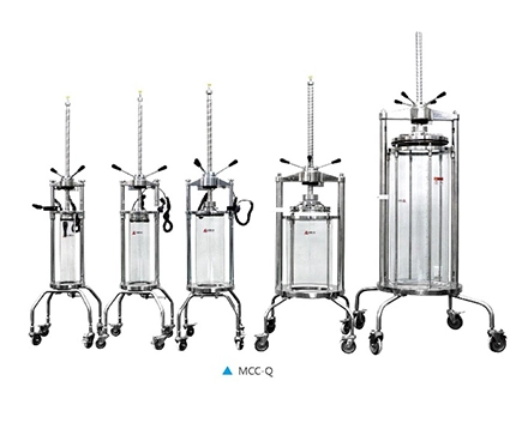Chromatography Column

პროდუქტის აღწერა
Process Chromatography Columns
Hanbon chromatographic column can meet the use requirements of most chromatographic fillers. Its good filling effect and high column efficiency meet the needs of customers from pilot to large-scale production. Laboratory LCC®chromatographic columns, MCC® manual chromatography columns, and ACC® automatic axial compression chromatography columns are available.
Types of Columns Used in Column Chromatography
MCC® Manual Chromatography Column
Manual screw compression is used to fill the filler, facilitating cleaning, disinfection, and manual operation.
ACC® Automatic Axial Compression Chromatography Column
The intelligent column loading method can ensure consistent filling results each time, and the chromatographic results can be repeated, reducing the risks caused by large differences between batches in the production process.
Chromatography Columns in Commercialization Phase Selection
Along with the development of the biopharmaceutical industry, more and more companies are entering into clinical trials and commercial production, and a stable, reproducible and easy-to-use loading process is becoming a demand of more and more companies. Manual column loading faces many problems such as poor reproducibility, time-consuming method development, and complicated maintenance processes.
ACC automatic column chromatography instrument, column chromatography equipment was born, which controls the forward or reverse motion of the motor through position feedback or pressure feedback to realize the automatic lifting and lowering of the column head; through the valve opening and closing and pneumatic diaphragm pump to realize the filling and recovery of the gel. After years of precipitation, it has now developed into the latest generation of mature fully automatic intelligent chromatography columns.
Factors Affecting Column Efficiency
The theoretical plate number and symmetry factor of a chromatographic column are important indicators of column efficiency. Factors that affect the theoretical column plate number and symmetry factor of chromatography columns include:
column size and packing type
The nature of the mobile phase
the nature of the sample
Temperature and pH
In addition, the structural design of the chromatographic column itself also affects the column efficiency of the chromatographic column. Such as the material and surface roughness of the column wall, the tightness of the packing, the uniformity of the mobile phase distribution, etc. Excellent column performance is dependent on the structural design of the column.

